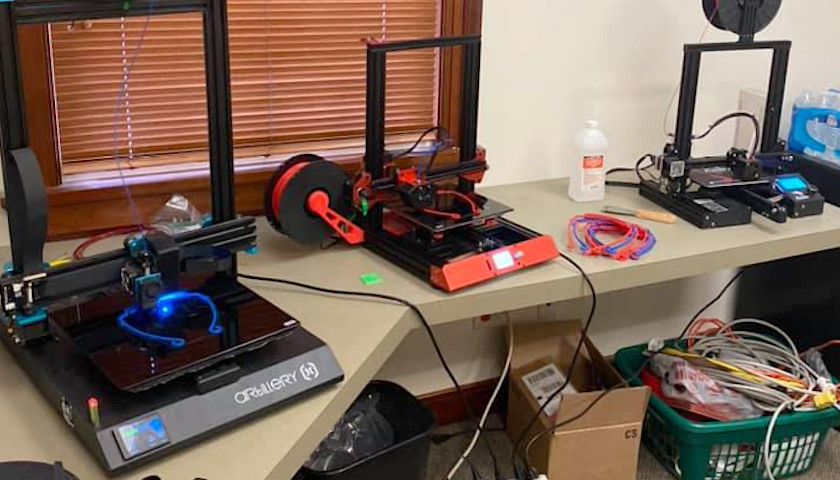Mayo Clinic announced last week that it is exploring the possibility of 3D printing face masks and other personal protective equipment items to employ in the national fight against COVID-19.
The famous clinic said its 3D Anatomic Modeling Laboratories across the country as well as its Division of Engineering are working together to “reverse-engineer, 3D-print and machine solutions for patient care.”
“We are creating a command center focused on, among other projects, the work we are doing to evaluate and potentially reverse-engineer replacement ventilators,” said Mark Wehde, chair of the Division of Engineering. “This would be a one-stop shop for emergency engineering requests related to COVID-19 response.”
Additive Manufacturing Facility Director Sean McEligot said his team “can apply 3D printing and machine shop production to manufacture products that may be in limited supply.”
“For example, we have been working with Dr. Morris on a laryngoscope, which has parts that are potentially in short supply,” he said.
Dr. Jonathan Morris, medical director of the 3D Anatomic Modeling Laboratory in Rochester, said he is looking at the possibility of printing components of N95 mask equivalents or “powered air-purifying respirator devices.”
The teams in Arizona and Florida are evaluating different 3D printed N95 mask designs and are working through “quality control processes” for various open-source designs.
“Mayo Clinic is preparing for many scenarios, and the 3D Anatomic Modeling Labs can be part of these efforts,” said Morris. “We have one of the leading point-of-care printing facilities in the world. We’re willing to help in whatever way we can to manufacture products on-site. And our 3D printing peers are willing to ramp up production to meet the growing demand once they know what would be useful to produce.”
Citizens respond
But it’s not just large corporations that can join the fight. In North Carolina, a group of small businesses have teamed up with their local hardware store to produce and deliver 3D printed face masks to first responders and medical companies, The Tennessee Star reported.
“For those of us with hobby printers, this is a no-brainer to help. What is sad – there are probably tens of thousands of printers collecting dust in colleges and schools now closed,” said Kent Misegades, president of AeroSouth, one of several North Carolina-based companies helping with the initiative.
About four or five local businesses are helping with the production of 3D-printed masks in a model that could be employed nationally to help address the shortage of N95 respirators. Combined, they are able to produce about 70 masks per week and deliver the masks to a True Value Hardware location in Seven Lakes, North Carolina.
Sam Ransdell, manager of the store, said his shop has received more than 600 orders for 3D-printed masks.
Misegades provided some pointers for those who are interested in helping out with the production of masks.
“There are a number of masks out there and they are probably all good,” he said, recommending Thingiverse, the best-known public archive of models for 3D-printers.
He said Ransdell is providing anyone in his area who wants to help with the plastic filament needed for the masks.
“Important is the type of plastic. He has chosen PETG probably as this is durable, inexpensive and similar to what is used for food packaging,” he said.
Misegades noted that some 3D printers will only run “with the filament from the printer manufacturer,” like his own printer, which can be purchased for under $200.
“The most critical aspect is the actual filter medium that is inserted in the small chamber defined by the three parts. I have not added a filter to my masks as I prefer Sam to do this to be consistent,” he added. “My understanding is that certain A/C filter media are adequate. One simply cuts pieces out of a filter.”
He also said it’s important to ensure that the masks will fit tightly on the face and said that do this, “one heats water to boiling in a pan and then holds the lip of the mask that will touch the face into the water until the plastic become soft.”
“Then the mask is removed and pressed against the face until it cools. This provides a custom fit without having to resort to more flexible material, which not all printers can handle,” he continued.
In Orrville, Ohio, a local hospital requested assistance for finding sources of personal protective equipment and a call went out to a group of residents who have tabletop 3D printers in their homes.
“We agreed to an initial order to make face shields and donate them,” said Victor Schantz, a resident helping with the project. “Working remotely in a safe manner, the group turned out over 160 printed forehead brackets in a couple of days.”
– – –
Anthony Gockowski is managing editor of The Minnesota Sun and The Ohio Star. Follow Anthony on Twitter. Email tips to [email protected].
Photo “3-D Printing PPE” by Victor Schantz.





